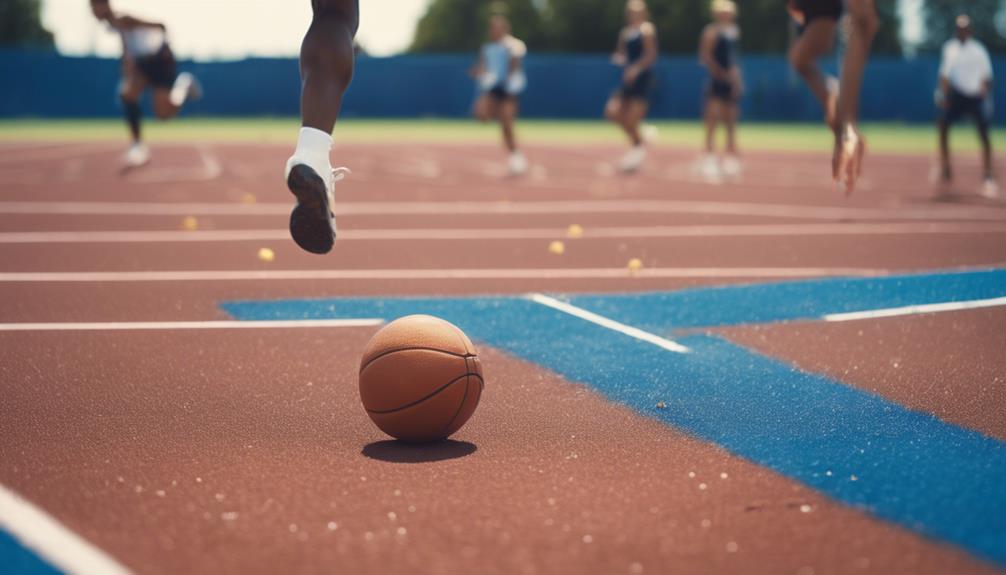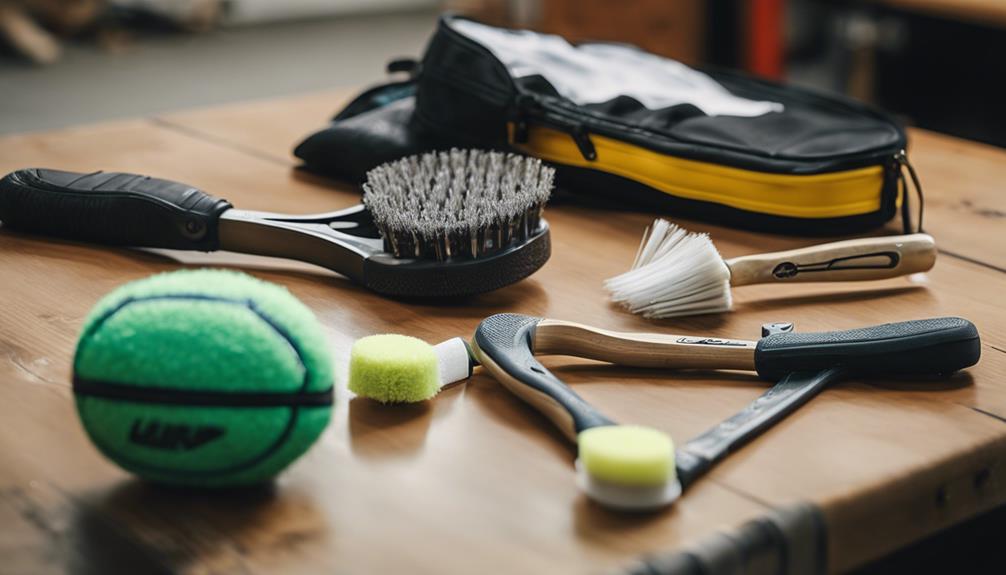
If you’ve ever spent time in the gym, you’ve likely heard about primary exercises like squats, deadlifts, and bench presses. While these foundational movements are crucial for building overall strength and muscle, there’s another category of movements that often flies under the radar: accessory exercises. These supplementary exercises help target specific muscle groups, enhance performance, and prevent injuries. In this article, we’ll delve into what accessory exercises are, why they’re important, and how you can effectively integrate them into your training routine.
What Are Accessory Exercises and Why Do They Matter?
Accessory exercises are movements that supplement your primary workouts. They typically focus on specific muscles or muscle groups that may not be fully engaged during your main lifts. For instance, while the barbell squat primarily targets the quadriceps and glutes, accessory exercises like leg extensions or hamstring curls can specifically isolate these areas to improve overall leg strength. Essentially, accessory exercises allow you to address muscle imbalances and enhance performance in your primary lifts.Why Should Esports Be Considered A SportIs Charger A Sports CarWhat Sports Are Popular In France
These exercises matter because they contribute to a well-rounded strength training program. By incorporating accessory movements, you can not only build muscle in specific areas but also improve your lifting technique and stability. This is particularly valuable for anyone looking to increase their overall lifting capacity or prepare for a competition. In short, accessory exercises are vital for a balanced approach to fitness, allowing you to sculpt your physique while boosting your strength and endurance.
The Benefits of Adding Accessory Exercises to Your Routine
Adding accessory exercises to your routine offers a plethora of benefits. One of the most significant advantages is injury prevention. By strengthening smaller, often-neglected muscle groups, you create a more stable foundation for your primary lifts. This stability can help reduce the risk of injury, particularly in areas like the shoulders, knees, and lower back. Additionally, accessory exercises can aid in muscle recovery by improving blood flow to targeted areas, facilitating faster healing.
Another major benefit is the enhancement of your overall performance. Accessory exercises can help improve your strength, mobility, and coordination, which are crucial for executing primary lifts with proper form. For example, incorporating rotator cuff exercises can improve shoulder stability during bench presses, leading to better performance and reduced risk of shoulder injuries. Overall, the addition of accessory exercises can lead to improved results, whether you aim to lift heavier weights, enhance athletic performance, or achieve a specific physique goal.
Key Differences: Accessory vs. Primary Exercises Explained
While primary exercises are the backbone of a strength training program, accessory exercises play a complementary role. Primary exercises, such as squats or deadlifts, typically involve multiple muscle groups and are often compound movements. They are designed to create significant strength gains and require substantial energy and focus. Accessory exercises, on the other hand, are usually isolation movements that target specific muscles. They are often less intense but can be just as crucial for balanced muscle development.
To put it simply, think of primary exercises as the main course at a dinner—you can’t have a meal without it! Accessory exercises are the side dishes that bring flavor and variety, helping to round out the meal. While primary lifts are essential for building strength and mass, accessory exercises can fine-tune your lifting ability and correct muscle imbalances, allowing you to maximize your performance in the gym.
Top Accessory Exercises for Strength Training Enthusiasts
If you’re looking to diversify your workout routine, there are several accessory exercises that strength training enthusiasts swear by. Some of the top choices include pull-ups and chin-ups, which are fantastic for building upper body strength and muscle endurance. Dumbbell lunges and split squats are excellent for targeting the quads, hamstrings, and glutes, providing a nice complement to traditional squats. For those focused on upper body lifting, variations like tricep dips and face pulls can significantly enhance shoulder and arm strength.
Another popular accessory exercise is the Romanian deadlift, which focuses on the posterior chain, including the hamstrings, glutes, and lower back. By incorporating these accessory movements into your routine, you can create a comprehensive training program that addresses all areas of your body. Don’t overlook the power of core-specific exercises like planks and Russian twists, as a strong core is essential for stabilizing your primary lifts.
How to Choose the Right Accessory Exercises for You
Choosing the right accessory exercises depends on your personal goals and the specific areas you want to target. Start by evaluating your primary lifts and identifying any weaknesses or areas of imbalance. For example, if you struggle with the lockout portion of your deadlift, consider incorporating rack pulls or deficit deadlifts to strengthen that specific phase of the lift. Similarly, if you find yourself having trouble maintaining proper form in your squats, adding exercises like hip thrusts can help build glute strength and improve your overall stability.
Moreover, take into account your fitness level and experience. If you’re new to strength training, start with basic accessory exercises that allow you to develop a solid foundation before progressing to more complex movements. Keep it varied to maintain motivation but ensure that you remain focused on the specific muscles you want to target. Ultimately, the right accessory exercises will support your primary lifts, help you progress toward your goals, and keep your workouts engaging.
Common Mistakes When Doing Accessory Exercises to Avoid
While accessory exercises can be a fantastic addition to your workout routine, there are common pitfalls to watch out for. One major mistake is neglecting proper form. Just because these movements may seem less intimidating than primary lifts doesn’t mean they don’t require attention to detail. Poor form can lead to injuries and negate the benefits of your workouts. Always prioritize form over weight, particularly with isolation movements where muscle engagement is crucial.
Another mistake is failing to track your progress. It’s easy to overlook accessory exercises in favor of the more glamorous primary lifts, but that doesn’t mean they shouldn’t be monitored. Just like with your main lifts, tracking sets, reps, and weights can help you identify improvements and keep your training focused. Alongside these, consider incorporating appropriate recovery time; overtraining can hinder your results and lead to burnout. So, stay mindful, and prioritize quality over quantity in your accessory work!
Integrating Accessory Exercises into Your Workout Schedule
Integrating accessory exercises into your workout schedule can seem daunting at first, but it’s easier than it sounds. One effective approach is to dedicate specific days to accessory work after your primary lifts. For instance, if you focus on squats and deadlifts on leg day, consider adding accessory exercises like leg curls or calf raises afterward. This makes for a well-rounded workout that maximizes your time in the gym without overwhelming you.
Alternatively, you can incorporate accessory exercises into your warm-up or cool-down routines. Performing lighter versions of accessory exercises can serve as a great way to activate specific muscle groups before your primary lifts or to promote recovery afterward. This strategy not only saves time but also ensures that your accessory work complements your primary workouts. Just remember to listen to your body and adjust your schedule as needed to avoid fatigue or overtraining.
Accessory Exercises for Specific Goals: Gain Strength or Flexibility
When it comes to achieving specific fitness goals, accessory exercises can be tailored to meet your needs. If gaining strength is your primary objective, focus on exercises that complement your main lifts and target weak points. For example, if you’re looking to boost your bench press, consider adding accessory movements like tricep extensions or chest flys to build the necessary strength in those supporting muscles. This targeted approach can significantly enhance your performance in your primary lifts.
On the other hand, if flexibility is a major goal for you, accessory exercises like stretching and mobility drills can make a world of difference. Incorporating exercises such as dynamic stretches or yoga poses can improve your range of motion, making your lifts safer and more effective. Finding a balance between strength-building and enhancing flexibility will ultimately help you achieve a well-rounded fitness routine that addresses both power and mobility.
How Often Should You Incorporate Accessory Exercises?
When it comes to frequency, the ideal incorporation of accessory exercises varies depending on your goals and training experience. For most individuals, aiming for two to three sessions per week that include accessory work can yield great results. This allows you to target specific muscle groups while also providing ample recovery time for your primary lifts. For example, you might have a workout split that focuses on upper body one day, lower body the next, and accessory exercises incorporated into both sessions.
However, it’s essential to listen to your body and adjust the frequency based on your recovery and overall workload. If you’re feeling fatigued or experiencing signs of overtraining, consider scaling back the volume or frequency of accessory exercises. Quality over quantity is key here; it’s better to perform fewer, focused accessory workouts than to overload your schedule and risk injury.
Real-Life Examples: Accessory Exercises in Action Today
To put all of this into perspective, let’s look at how accessory exercises play out in real life. Take a powerlifter preparing for a competition. Their primary focus may be on the squat, bench, and deadlift. To bolster their performance, they might include accessory exercises like box squats to enhance explosiveness, banded bench presses for accommodating resistance, and deficit deadlifts to improve strength off the floor. By strategically selecting accessory movements, they can address specific weaknesses and build a stronger foundation for their primary lifts.
Similarly, a general fitness enthusiast aiming to improve their physique might incorporate accessory exercises such as dumbbell shoulder presses, bent-over rows, or glute bridges into their routine. This not only helps to sculpt specific areas of the body but also enhances overall strength and performance during their primary lifts. In both cases, accessory exercises are essential components that complement and elevate the effectiveness of their respective training programs.
In conclusion, accessory exercises are a valuable addition to any fitness regime. Whether you’re looking to improve strength, enhance performance, or simply achieve a balanced physique, these movements serve as essential tools to help you reach your goals. By understanding their importance, choosing the right exercises, and integrating them effectively, you’ll be on your way to a more comprehensive and rewarding workout experience. So go ahead, don’t underestimate the power of accessory exercises—the benefits might just surprise you!





